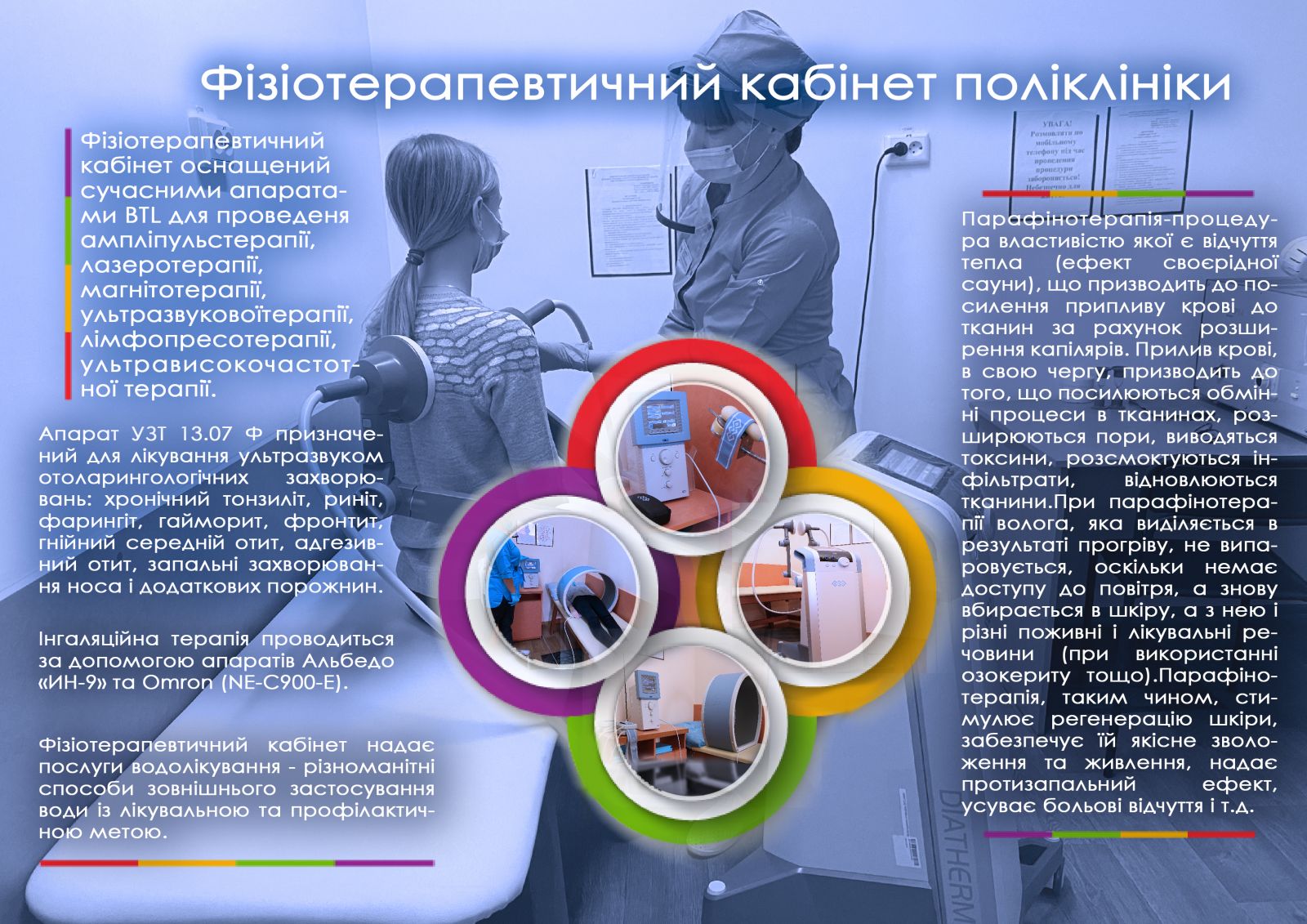30.08.2022
The therapeutic effect of physiotherapy is based on the influence of external physical factors on the body. This is the safest and most painless type of therapy. Physiotherapeutic procedures significantly improve blood circulation, normalize immune processes, stabilize neurohumoral regulation, and have an analgesic regenerative (restorative) effect.
Carrying out physiotherapeutic procedures together with medical therapy helps to reduce the duration of the disease, and prevents possible complications.
Full restoration of tissue, organ, or body part functions is impossible without an adequate set of physiotherapeutic measures. Today, the preservation and restoration of the patient's physical health are possible with the help of substitution therapy, massages, physical exercises, as well as hardware methods of treatment. After the procedures, joint mobility improves, lost functions are restored, the strength of weakened muscles increases and pain symptoms disappear. Such a method as massage helps to relieve muscle tension and improves blood and lymph circulation, which increases the delivery of oxygen and nutrients to the tissues, and the removal of toxic substances from the body. It will help to get rid of stress and nervous fatigue. Massage after surgery allows you to quickly restore the function of organs.
The State Institution "TMA of the Ministry of Internal Affairs in Chernihiv region" employs highly qualified specialists in therapeutic massage, equipped with modern equipment physiotherapy rooms and physical therapy rooms.

(с) 2024